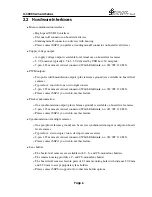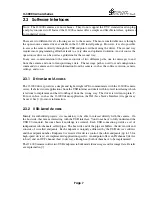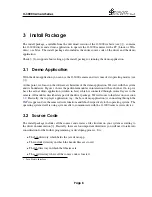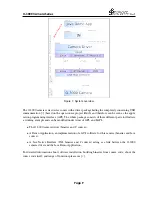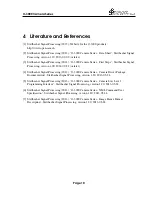
O-3000 Camera Series
2.2
Hardware Interfaces
•
Main communication interface:
–
High-speed USB 2.0 interface.
–
Flat micro-B connector on board-level devies.
–
Standing mini-B connector on devices with housing.
–
Please contact SSP if you prefer a standing mini-B connector on board-level devices.
•
Supply voltage output:
–
A supply voltage output is available for external use on board-level cameras.
–
5.0 V nominal, typically 4.5 to 5.5 V delivered by USB host, 50 mA peak.
–
5-pin, 1.25 mm male vertical connector (Würth Elektronik, no. 653’005’114’822).
•
PWM outputs:
–
Two pulse width modulation outputs (plus reference ground) are available on board-level
cameras.
–
Typical use: control of one or two light sources.
–
5-pin, 1.25 mm male vertical connector (Würth Elektronik, no. 653’005’114’822).
–
Please contact SSP if you wish to use this feature.
•
Flash synchronization:
–
One synchronization output (plus reference ground) is available on board-level cameras.
–
5-pin, 1.25 mm male vertical connector (Würth Elektronik, no. 653’005’114’822).
–
Please contact SSP if you wish to use this feature.
•
Synchronization of multiple cameras:
–
One pin (plus reference ground) can be used as synchronization input or output on board-
level cameras.
–
Typical use: stereoscopic vision, stereopsis, camera arrays.
–
2-pin, 1.25 mm male vertical connector (Würth Elektronik, no. 653’002’114’822).
–
Please contact SSP if you wish to use this feature.
•
Lens holder:
–
The board-level cameras are available with C-, S- and CS-mount lens holders.
–
The camera housing provides a C- and CS-mount lens holder.
–
The board-level cameras feature pairs of 2.1 mm mounting holes with distance 20.0 mm
and 22.0 mm to accept proprietary lens holders.
–
Please contact SSP for support or for other lens holder options.
Page 6






